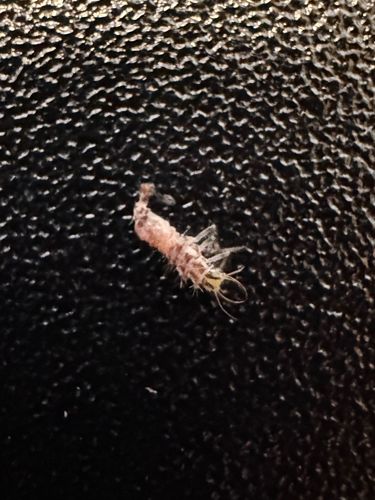Antlion Larva (or Doodlebug)
Scientific Name: Various species within the family Myrmeleontidae
Order & Family: Order: Neuroptera, Family: Myrmeleontidae
Size: Larvae typically range from 0.5 to 2 cm (0.2 to 0.8 inches) in length. Adult antlions can have a wingspan of 2 to 15 cm (0.8 to 6 inches), depending on the species.

Natural Habitat
Antlion larvae are found in dry, sandy, or loose soil environments, often under protective overhangs like rocks, trees, or man-made structures, which keep their pits from being destroyed by rain. Adults are typically found in similar dry, often vegetated areas.
Diet & Feeding
The larvae are carnivorous, feeding primarily on ants and other small insects that fall into their pits. Adult antlions are less commonly observed feeding, but some species are known to consume pollen, nectar, or small insects.
Behavior Patterns
Antlion larvae are ambush predators. They dig conical pits in loose soil or sand, then hide at the bottom, waiting for prey (primarily ants) to fall in. They use their large, sickle-shaped mandibles to grab prey and sometimes flick sand to dislodge prey attempting to escape. The adult antlion is a winged insect resembling a dragonfly, but nocturnal and typically rests with its wings folded over its body.
Risks & Benefits
Antlion larvae pose no direct risk to humans; they do not bite or sting. From an ecological perspective, they are beneficial as natural pest control agents, preying on ants and other small insects. Adult antlions play a role in pollination for some plant species.
Identified on: 8/20/2025